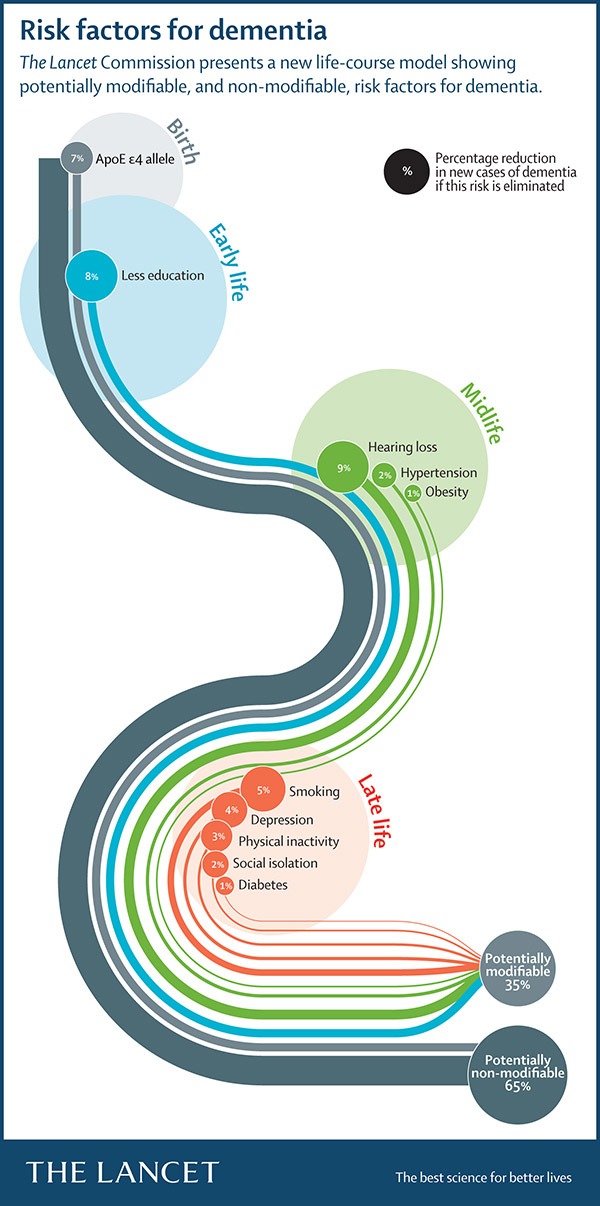Study challenges the “seductive” amyloid hypothesis of Alzheimer’s disease (AD)
 _____
_____
Vascular Health at Age 36 Tied to Brain Health at 70 (Medpage Today):
“A longitudinal study shed light on just how early people may want to start doing something to reduce their dementia risk decades in the future.
Each 1% increase in Framingham vascular risk score at age 36 was associated with 9% higher white matter hyperintensity volume … (however) Vascular risk scores were not linked to beta-amyloid status at any point.
“There is increasing evidence that vascular risk factors impact on an individual’s risk for developing dementia and may be modifiable,” Schott said. “This study provides yet more evidence that midlife cardiovascular risk has negative consequences on brain health many years later, but may not do so via the deposition of beta-amyloid.”
(Sudha Seshadri, MD, of the University of Texas Health in San Antonio) added that “In short, these data from the Insight 46 study make a strong case for addressing vascular risk as early as the fourth decade of life; strengthen the case for studying adolescent, early-childhood, and perinatal factors as factors associated with dementia; and warn that effective prevention of dementia in our time will likely require extending thinking well beyond the seductive amyloid hypothesis and the current emphasis on elderly patients as the best target for preventive interventions”.
The Study:
Associations Between Vascular Risk Across Adulthood and Brain Pathology in Late Life: Evidence From a British Birth Cohort (JAMA Neurology). From the abstract:
- Importance: Midlife vascular risk burden is associated with late-life dementia. Less is known about if and how risk exposure in early adulthood influences late-life brain health.
- Objective: To determine the associations between vascular risk in early adulthood, midlife, and late life with late-life brain structure and pathology using measures of white matter–hyperintensity volume, ?-amyloid load, and whole-brain and hippocampal volumes.
- Design, Setting, and Participants: This prospective longitudinal cohort study, Insight 46, is part of the Medical Research Council National Survey of Health and Development, which commenced in 1946. Participants had vascular risk factors evaluated at ages 36 years (early adulthood), 53 years (midlife), and 69 years (early late life) … Participants with at least 1 available imaging measure, vascular risk measurements at 1 or more points, and no dementia were included in analyses.
- Conclusions and Relevance: Higher vascular risk is associated with smaller whole-brain volume and greater white matter–hyperintensity volume at age 69 to 71 years, with the strongest association seen with early adulthood vascular risk. There was no evidence that higher vascular risk influences amyloid deposition, at least up to age 71 years. Reducing vascular risk with appropriate interventions should be considered from early adulthood to maximize late-life brain health.
The Study in Context:
- Cognitive training, diet, exercise, and vascular management seen to improve cognition even in people with genetic predisposition for dementia (APOE e4)
- New studies reinforce Education and Cognitive Reserve –instead of drugs targeting beta amyloid– as most promising avenue to prolong cognitive health and reduce dementia risk
- Study: 46.7 million Americans have Alzheimer’s Disease brain pathology today, so it’s urgent to prevent or at least delay progression to clinical disease
- Report: 35% of worldwide dementia cases could be prevented by modifying these 9 modifiable risk factors



